The autonomous driving and vehicle communication systems with the infrastructure (Car-to-X) will be part of the automobile industry, as well as electric propulsion, even if the robot cars late until it becomes reality.
But that will happen… and that's why every year researchers from the Volkswagen Group meet with partners and universities to exchange experiences at the Autodromo do Algarve. At the same time, a second team is developing a permanent autonomous driving experience in an urban ecosystem in the city of Hamburg, Germany.
Walter hangs on to the trajectory of the right-hand turn, accelerates again to the straight, and then prepares to touch the apex again, almost going up the corrector. Paul Hochrein, project director, is sitting looking calm behind the wheel, committed to…doing nothing but watching. It's just that Walter manages to do everything on his own here on the Portimão circuit.
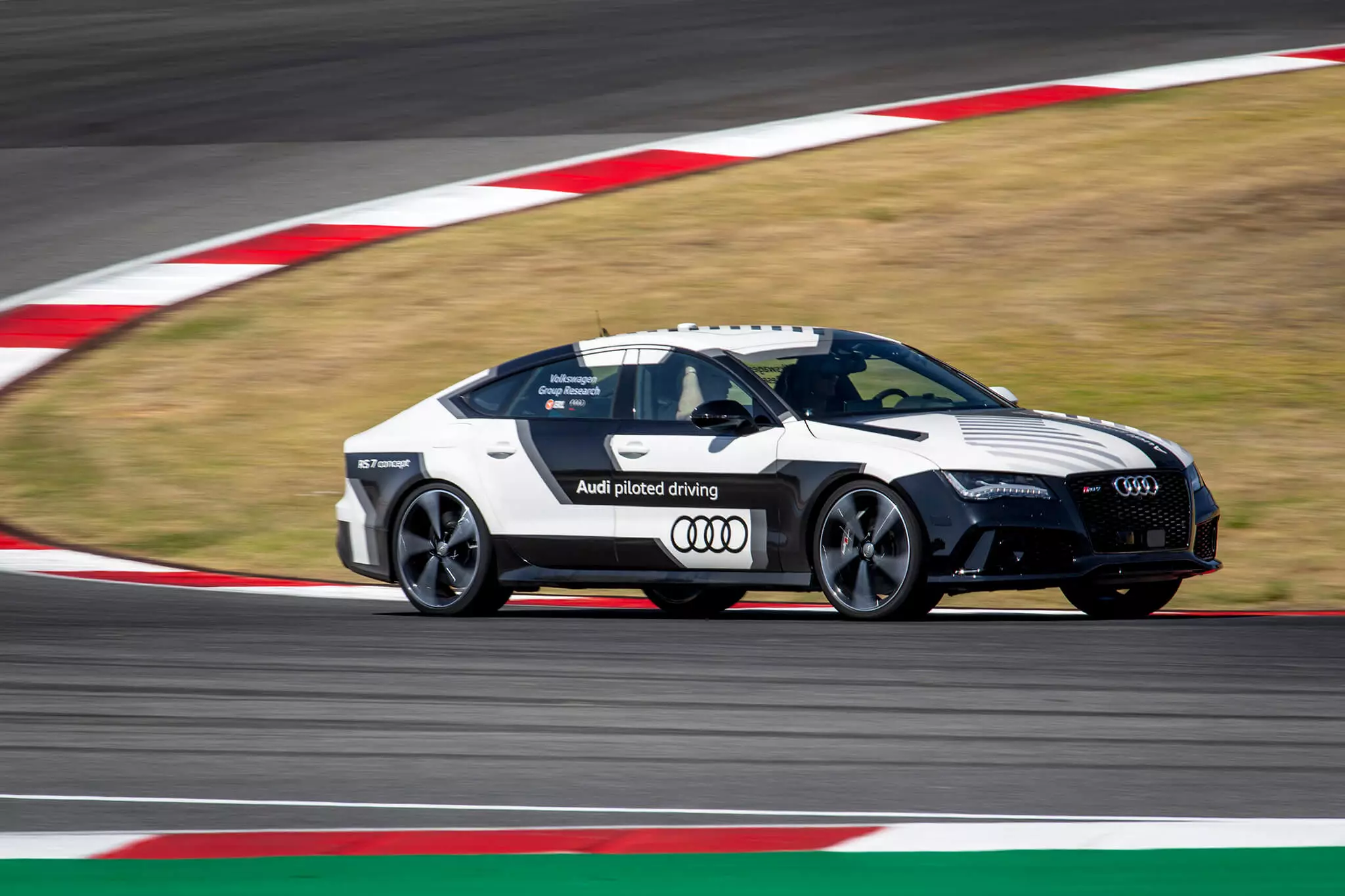
Who is Walter?
Walter is an Audi RS 7 , one of several robot cars, loaded with high-performance electronics and computers in the trunk. It does not limit itself to following a rigid and programmed trajectory for each lap of the approximately 4.7 km perimeter of the Algarve route, but it finds its path in a variable way and in real time.
Using the GPS signal, Walter is able to know his location to the nearest centimeter on the runway because the software arsenal calculates the best route every hundredth of a second, defined by two lines in the navigation system. Hochrein has his right hand on the switch that shuts down the system in case something goes wrong. If that happens, Walter will immediately switch to manual driving mode.
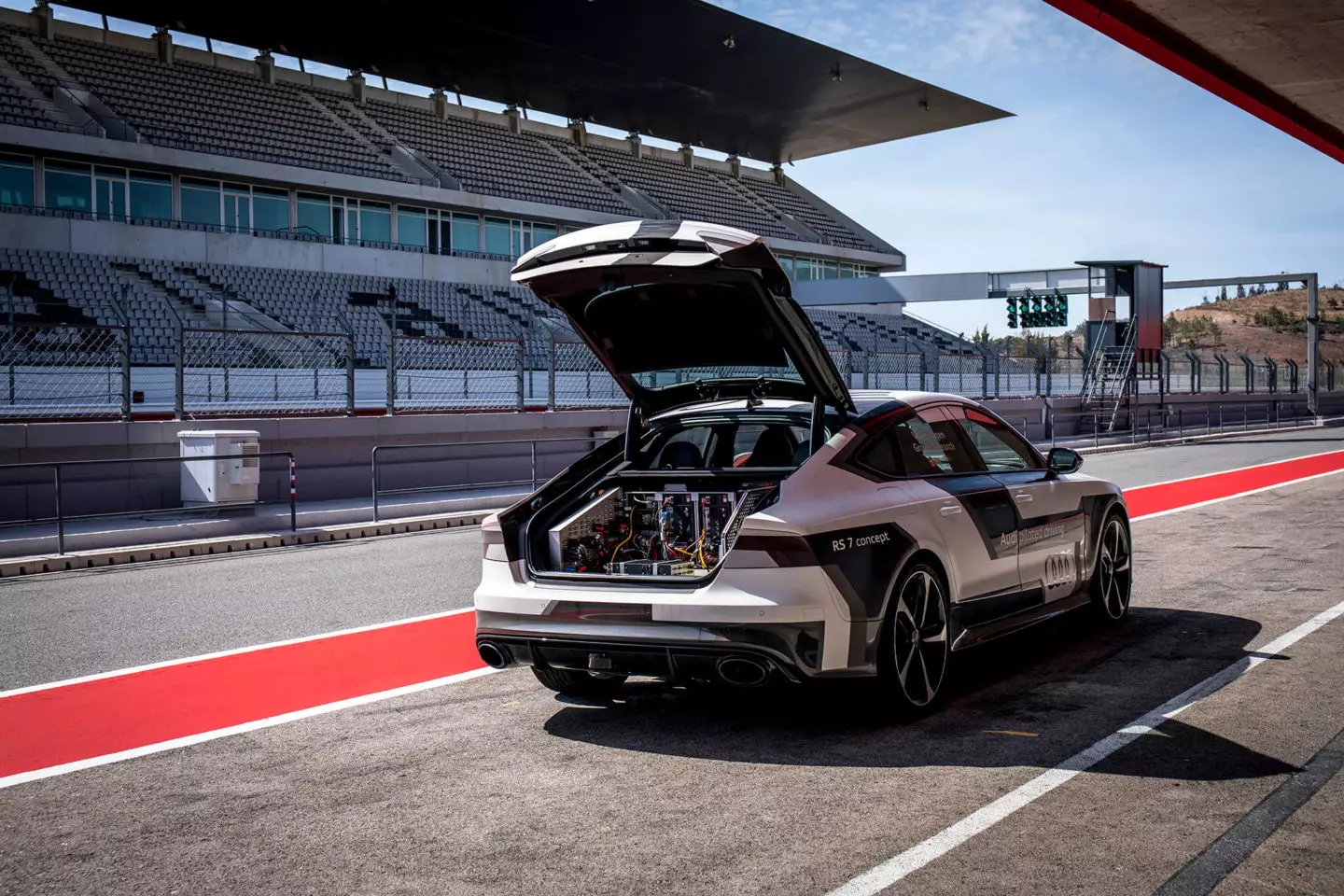
And why is the RS 7 called Walter? Hochrein jokes:
"We spend so much time in these test cars that we end up naming them."
He is the project leader during these two weeks in the Algarve, which is already the fifth for this Volkswagen group. When he says “we” he means a team of about 20 investigators, engineers — “nerds”, as Hochrein calls them — and test drivers who came here with a dozen Volkswagen Group cars.
The boxes are filled with notebooks where the newly collected measurement data is evaluated and decoded with software. “We're busy putting zeros and ones together,” he explains with a smile.
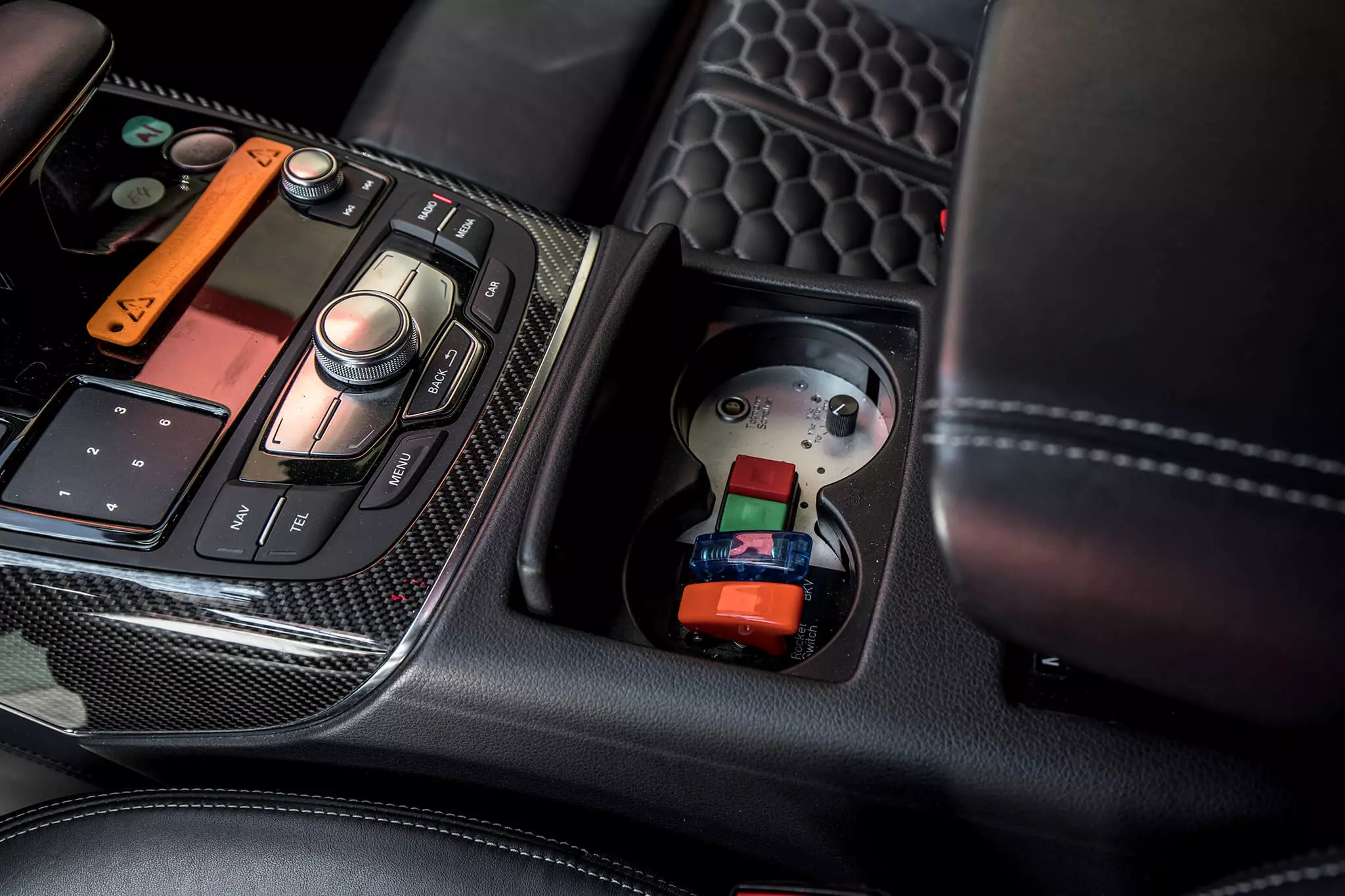
engineers and scientists together
The mission's objective is to provide important interdisciplinary information for the Volkswagen Group brands on the latest developments in autonomous driving and assistance systems. And not only Volkswagen Group company employees participate in it, but also partners from leading universities, such as Stanford, in California, or TU Darmstadt, in Germany.
Subscribe to our newsletter
“We are here to make it possible for our partners to have access to the content we have collected in these testing sessions”, explains Hochrein. And the Algarve racecourse was chosen because of its roller coaster topography, because here all technology can be safely tested thanks to wide loopholes and because there is a very low risk of exposure to “unwanted” spectators:
“We were able to assess the systems in an environment with high security standards and the most demanding dynamic challenges, so that we can develop them in the best way possible. The work also gives us the opportunity to consider relevant aspects of driving that cannot be examined individually on public roads.”
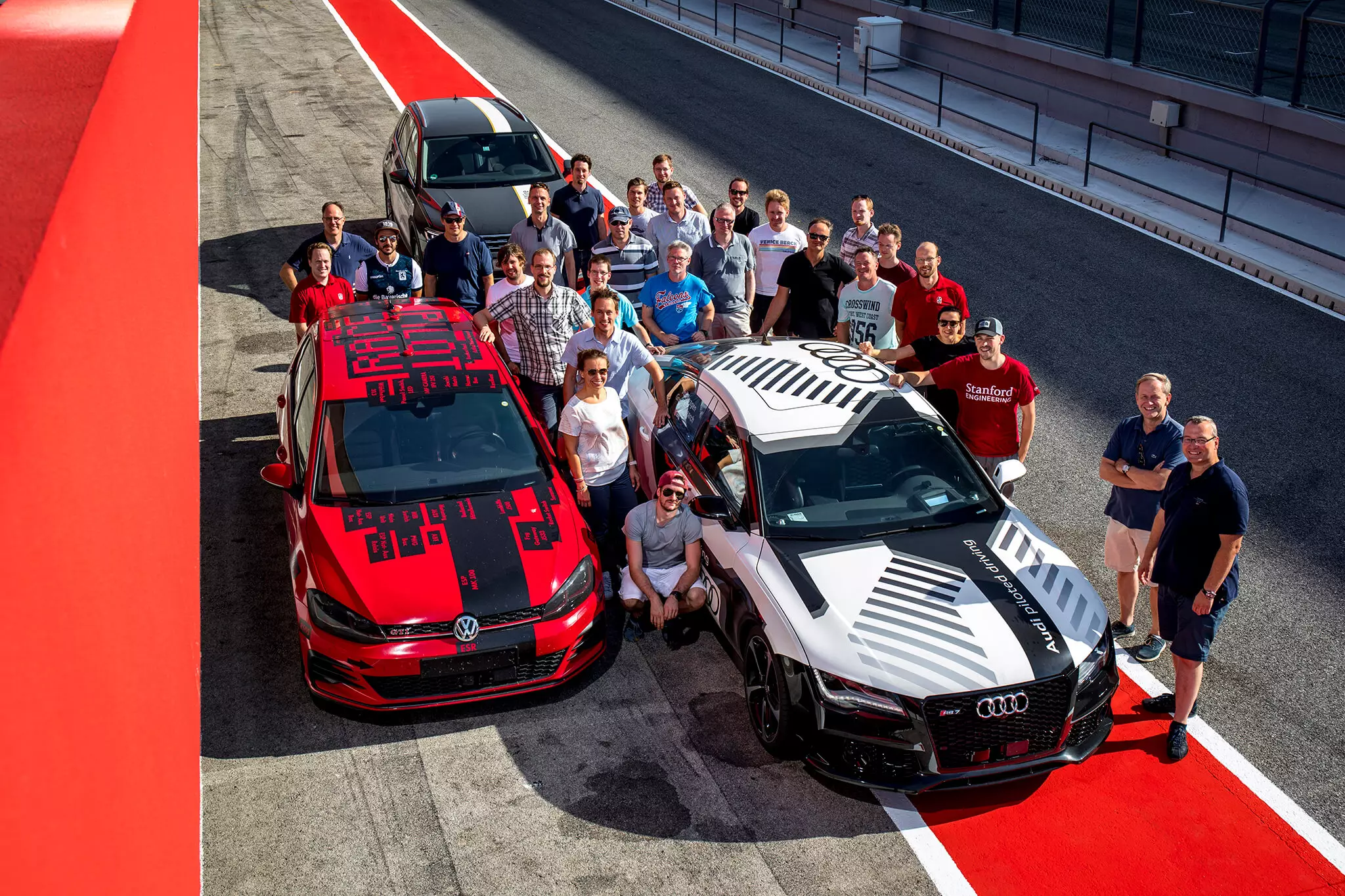
It makes sense. At Walter, for example, various autonomous driving profiles are being tested.
How do passengers feel when Walter's tires screech around corners at high speed? What if the suspension is on a more comfortable setting and the car always moves at a slower speed in the middle of the track? How can the correlation between tires and autonomous driving be defined? What is the ideal balance between behavioral precision and the computing power needed? How can you set the schedule so that Walter is as economical as possible? Could a driving mode in which Walter is able to accelerate furiously around corners be so aggressive as to prompt passengers to return lunch to their origins? How is it possible to achieve a more characteristic rolling experience of a make or model in a robot car? Does a Porsche 911 passenger want to be driven differently than a Skoda Superb?
PlayStation to guide
“Wire steering” — steer-by-wire, through which it is feasible to decouple steering wheel movement from steering wheel movement — is another technology that is also being tested here, mounted on a Volkswagen Tiguan waiting for me at the entrance. of the boxes. In this vehicle the steering mechanism is not mechanically connected to the front wheels, but electrically connected to an electromechanical control unit, which rotates the steering.
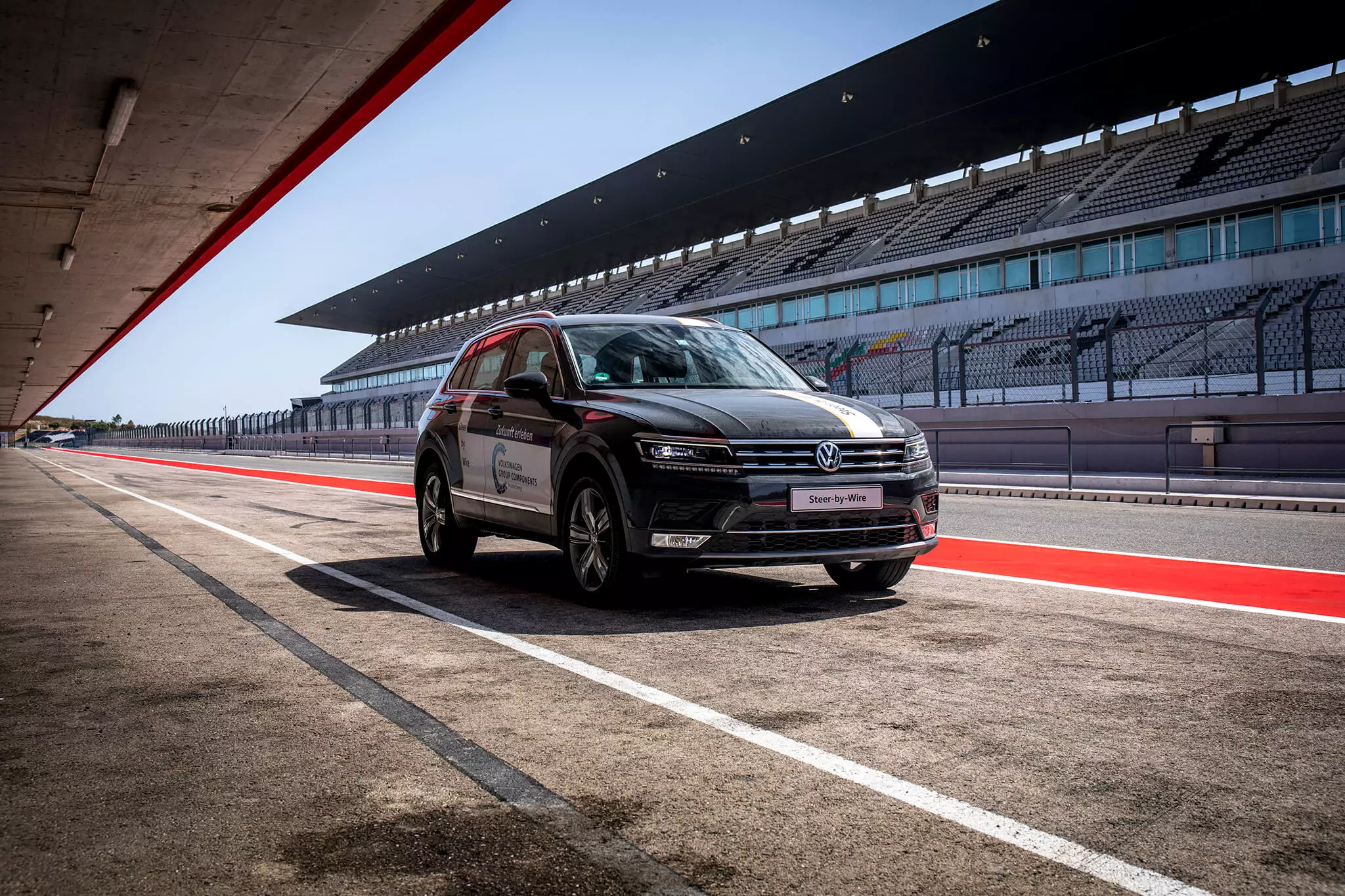
This experimental Tiguan is used as a tool to adjust different steering settings: direct and fast for sporty driving or indirect for highway travel (using the software to vary the steering feel and gear ratio).
But as future robot cars won't even have the steering wheel in place for most of the trip, here we have a PlayStation controller or a smartphone turned into a steering wheel , which takes some practice. True, German engineers used cones to improvise a slalom track in pit lane and, with a little practice, I almost managed to finish the course without sending any orange conical markers to the ground.
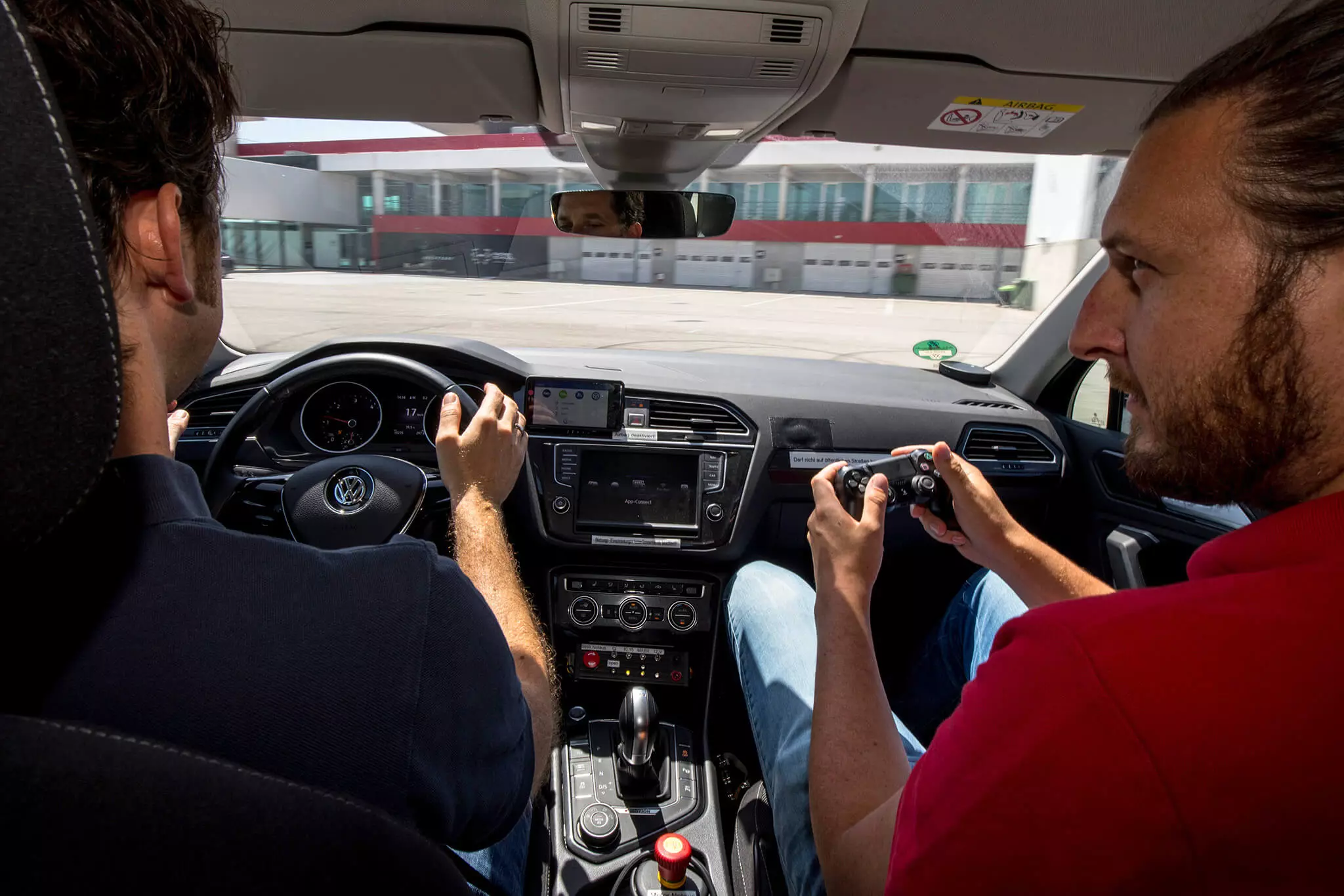
Dieter and Norbert, the Golf GTIs that walk alone
Back on track, tests led by Gamze Kabil address different autonomous driving strategies in a red Golf GTI, “called” dieter . If the steering wheel doesn't move when the car is turning or changing lanes while driving autonomously, could it unnerve the car's occupants? How smooth should the transition from autonomous to human driving be?
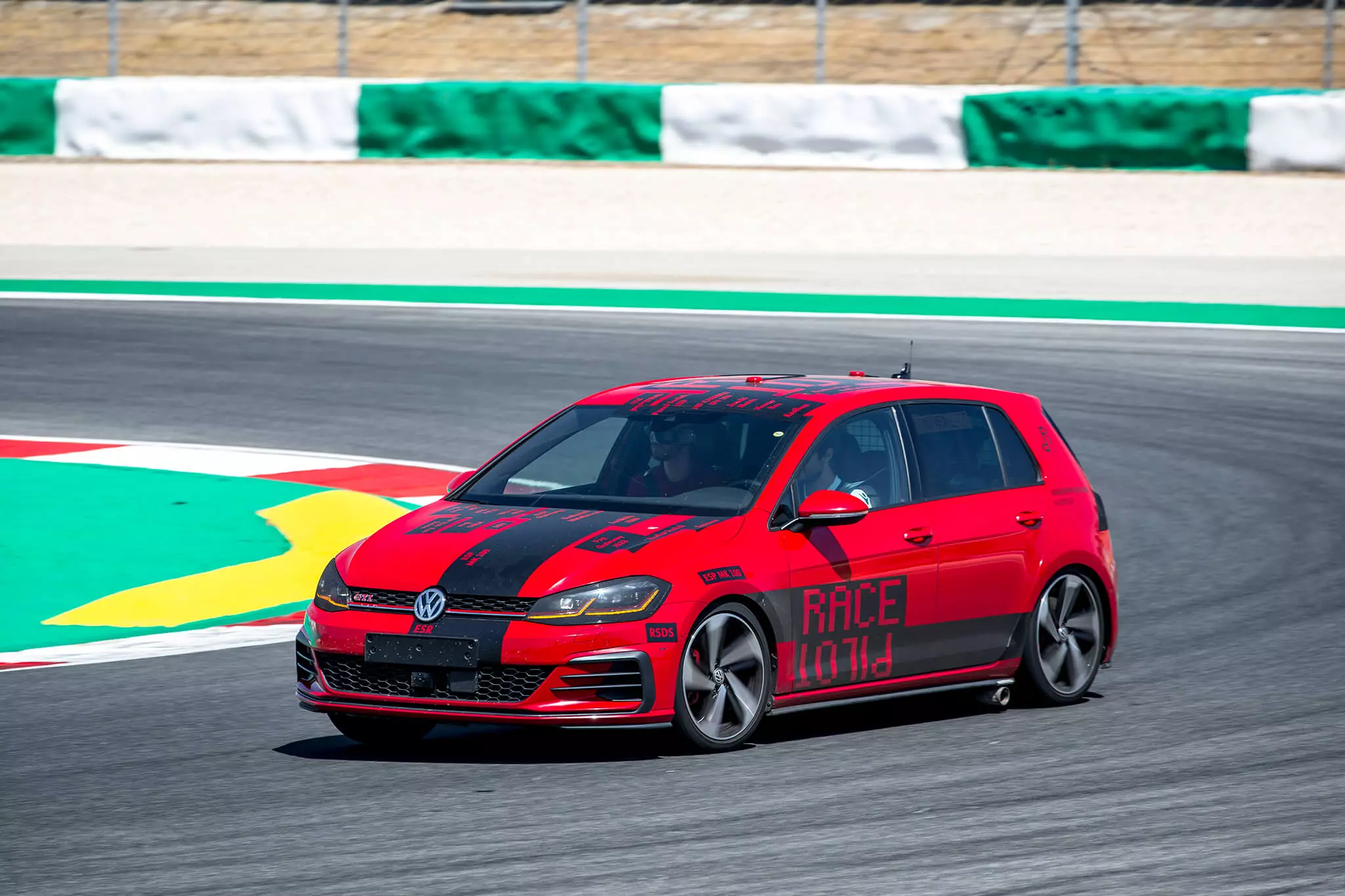
The community of scientists is also very involved in these future car technologies. Chris Gerdes, professor at Stanford University, also came to Portimão with some of his doctoral students with whom he sits in the Norbert , another Red Golf GTI.
Nothing new for him, who, in California, has a similar Golf with which he conducts studies for Volkswagen. The main objective is to regulate the dynamics of conduction at the limits and to develop neural networks with which appropriate models can be mapped and using “machine learning” (machine learning) with predictive control models. And, in the same process, the team is looking for new clues to answer the million dollar question: can algorithms based on Artificial Intelligence be safer than human conductors?
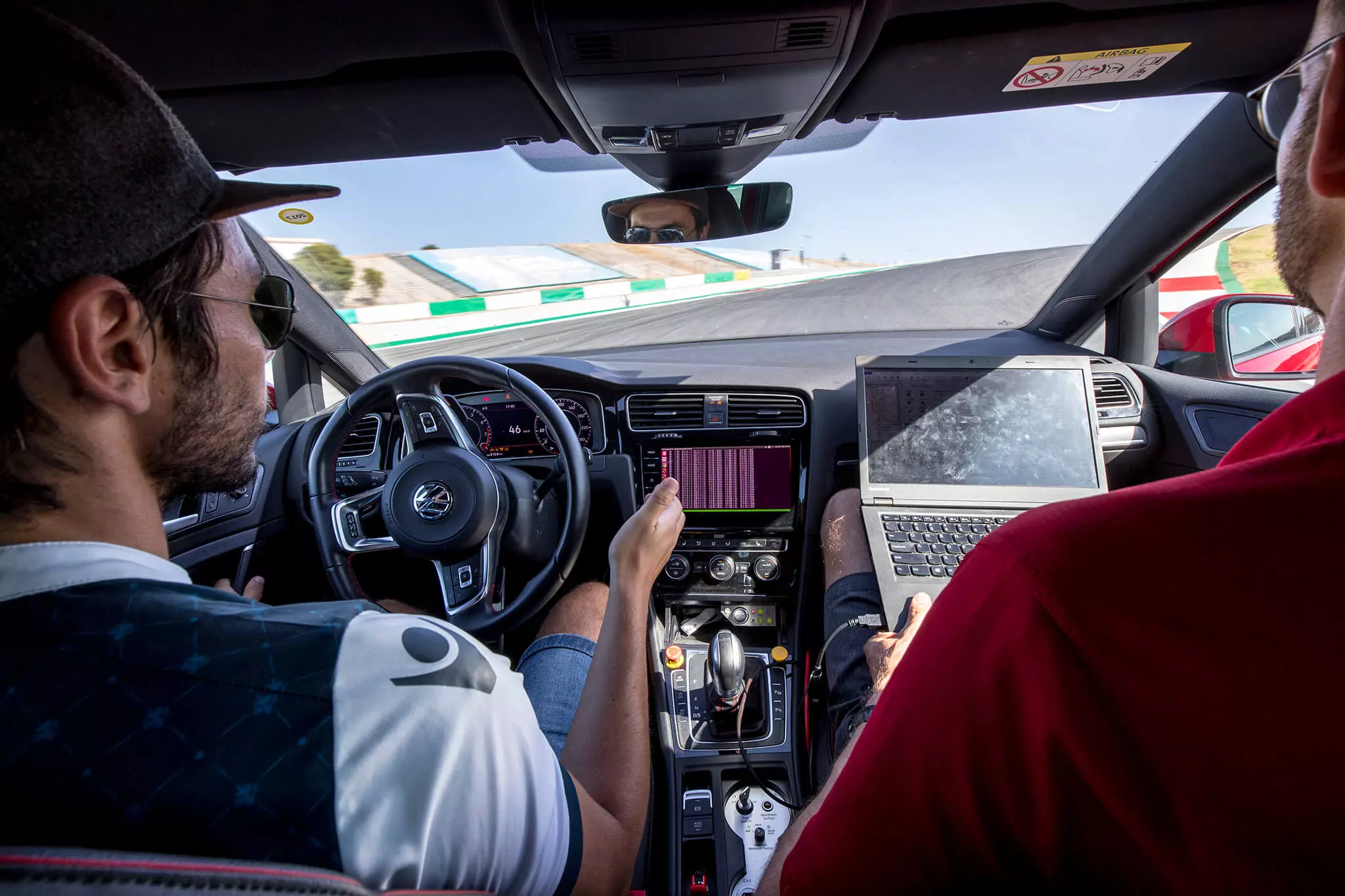
None of the engineers and scientists present here believe that, contrary to what some brands have already promised, in 2022 there will be robot cars circulating freely on public roads . It is likely that by then the first autonomously-driving vehicles in controlled environments such as airports and industrial parks will be available, and that some robot cars will be able to perform a limited number of tasks for a short period of time on public roads in some parts of the world. .
We're not dealing with simple technical developments here, but it's not aerospace science either, but we're probably somewhere in between in terms of complexity. That's why when this year's testing session ends in southern Portugal, no one says “goodbye”, just “see you soon”.
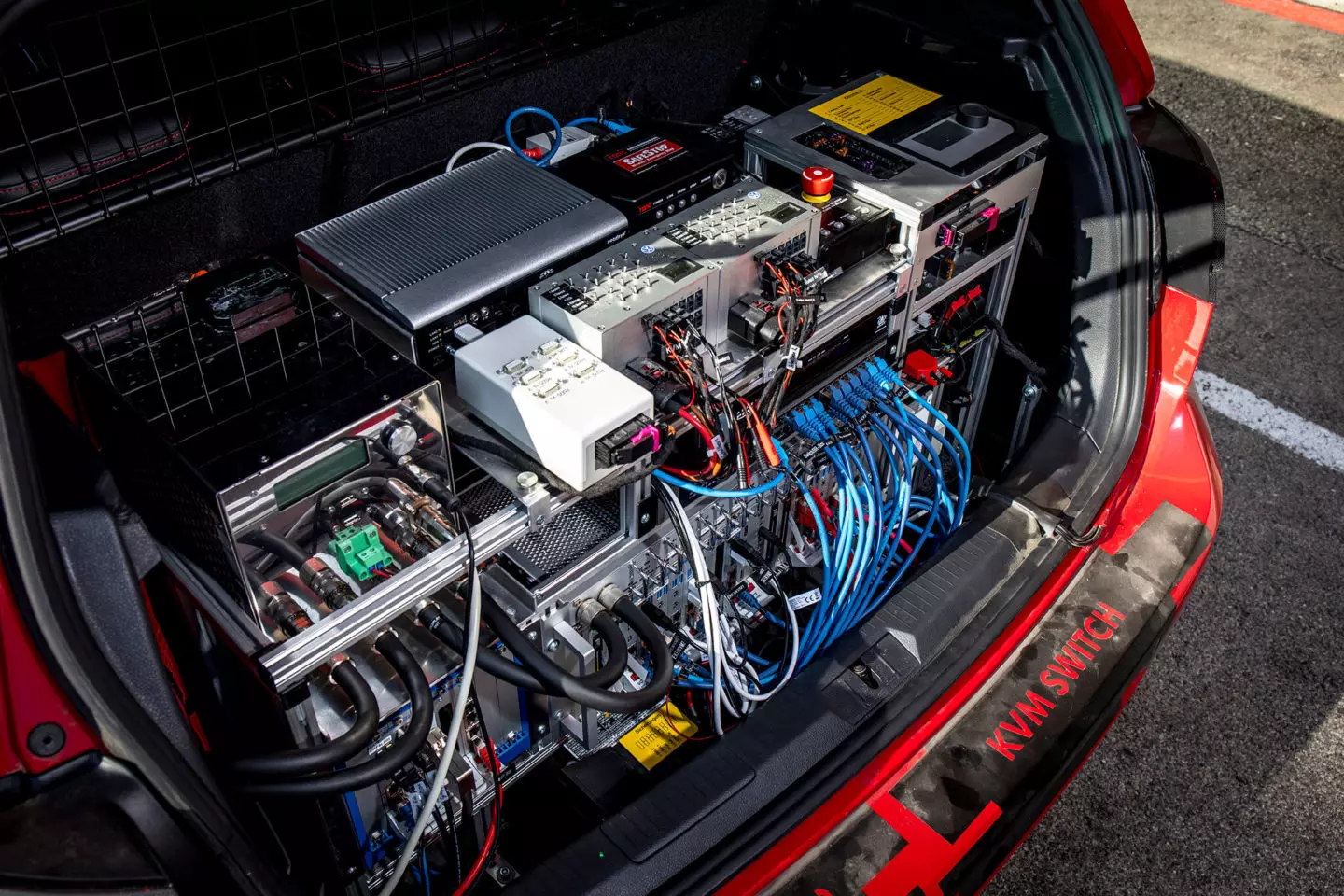
Luggage compartment disappears to make way for computers, lots of computers.
Urban areas: the ultimate challenge
A totally different but even more difficult challenge is what robot cars will have to face in urban areas. That's why the Volkswagen Group has a group dedicated to working in this scenario, based in Hamburg, and which I also joined to get an idea of the development process. As Alexander Hitzinger, senior vice president of the Autonomous Driving department at the Volkswagen Group and Volkswagen's Chief Brand Officer for technical development of commercial vehicles at Volkswagen explains:
“This team is the core of the newly created Volkswagen Autonomy GmbH department, a competence center for level 4 autonomous driving, with the ultimate goal of bringing these technologies to maturity for market launch. We are working on an autonomous system for the market that we want to launch commercially in the middle of this decade”.
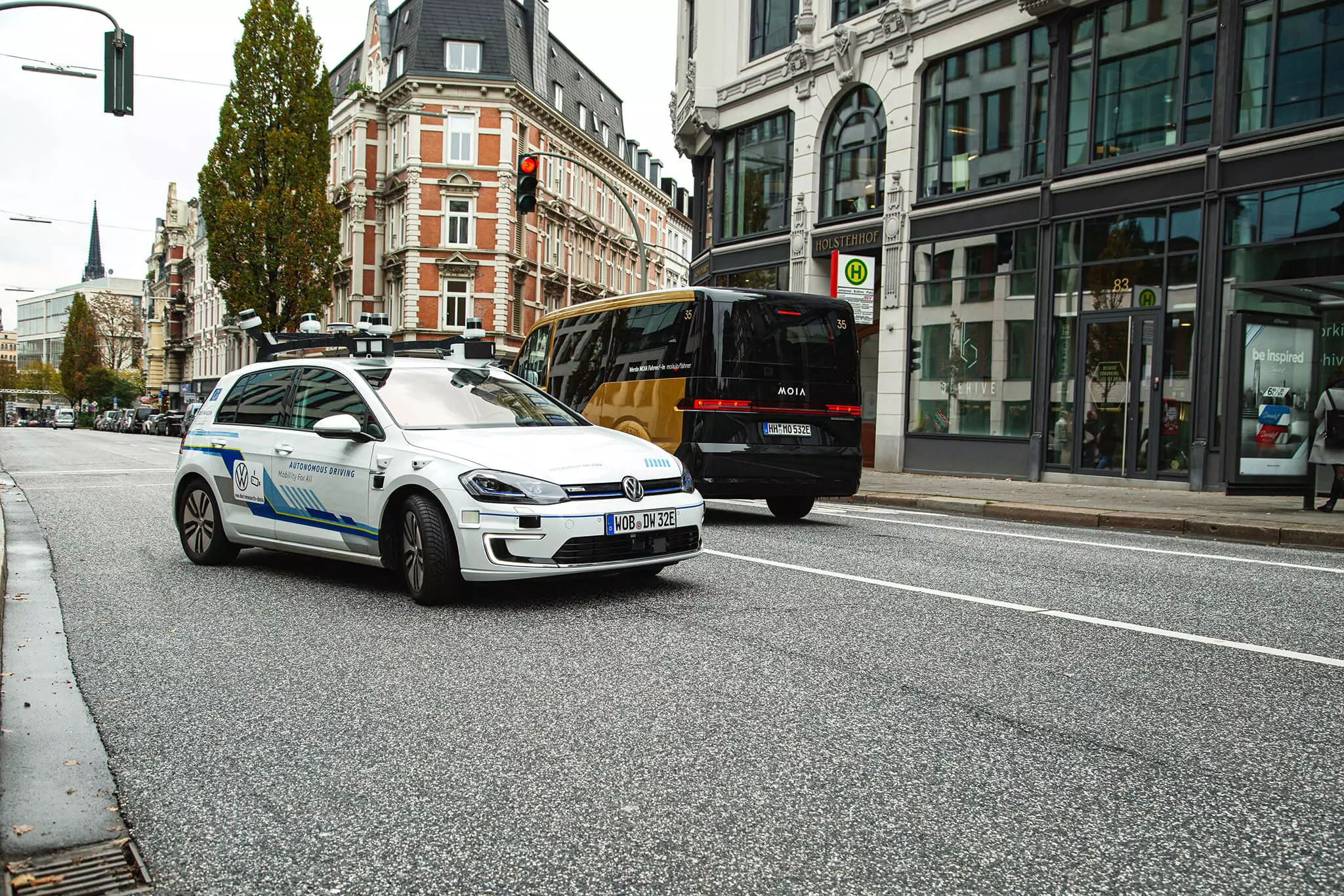
In order to carry out all the tests, Volkswagen and the federal government of Germany are cooperating here with the installation of an almost 3 km long section in the center of Hamburg, where several experiments are carried out, each lasting a week and performed every two to three weeks.
In this way, they are able to gather valuable information about the usual challenges of congested urban traffic:
- In relation to other drivers that far exceed the legal speed;
- Cars parked too close or even on the road;
- Pedestrians who ignore the red light at a traffic light;
- Cyclists who are riding against the grain;
- Or even intersections where the sensors are blinded by works or improperly parked vehicles.
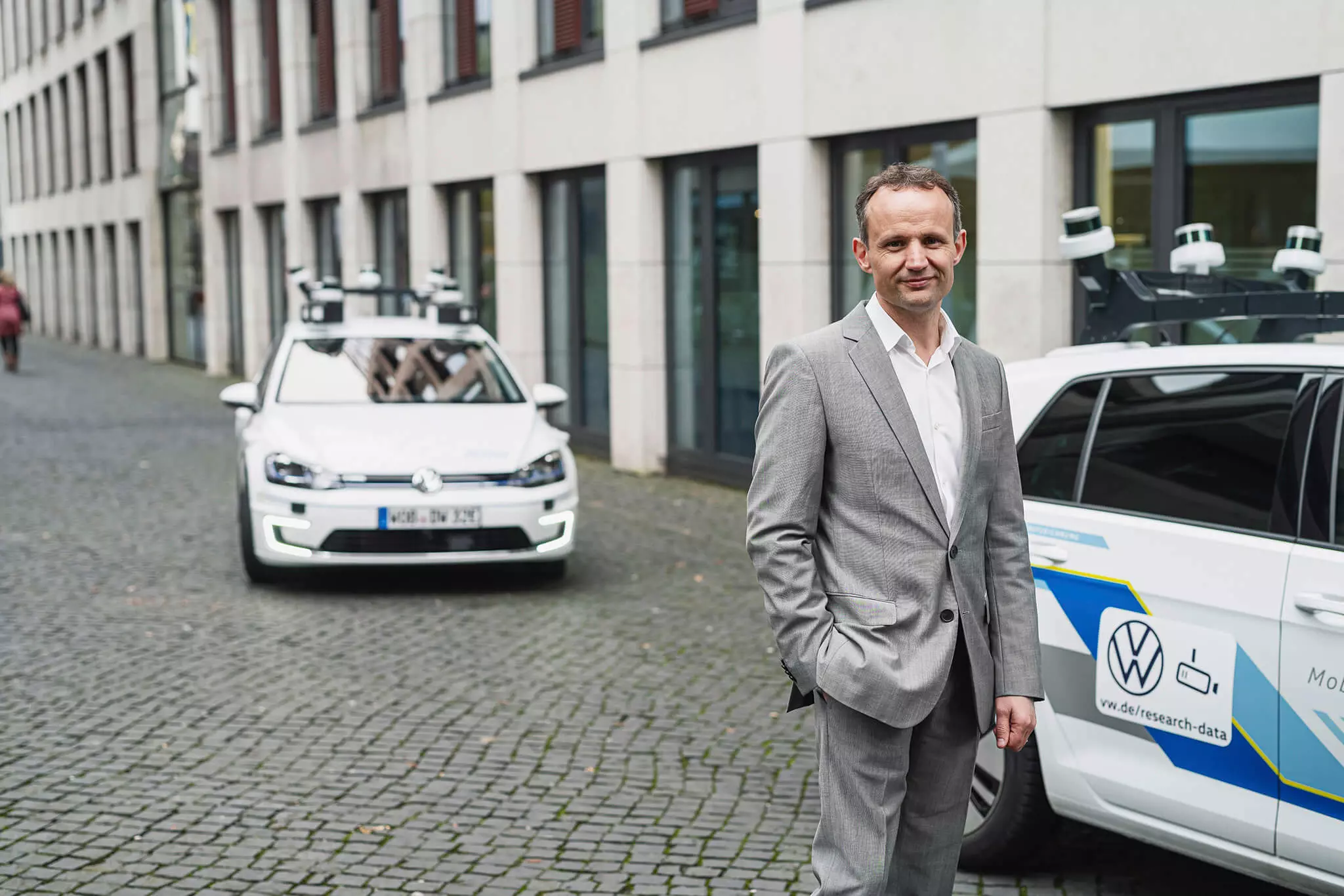
Robot cars test in city
The test fleet of these robot cars is made up of five (as yet unnamed) fully “autonomous” electric Volkswagen Golfs, capable of predicting the potential traffic situation about ten seconds before it occurs — with the help of extensive data obtained during the nine-month testing phase on this route. And this is how autonomously driven vehicles will be able to react to any danger in advance.
These electric Golfs are true laboratories on wheels, equipped with various sensors on the roof, on the front flanks and in the front and rear areas, to analyze everything around them with the help of eleven lasers, seven radars, 14 cameras and ultrasound . And in each trunk, engineers assembled the computing power of 15 laptops that transmit or receive up to five gigabytes of data per minute.
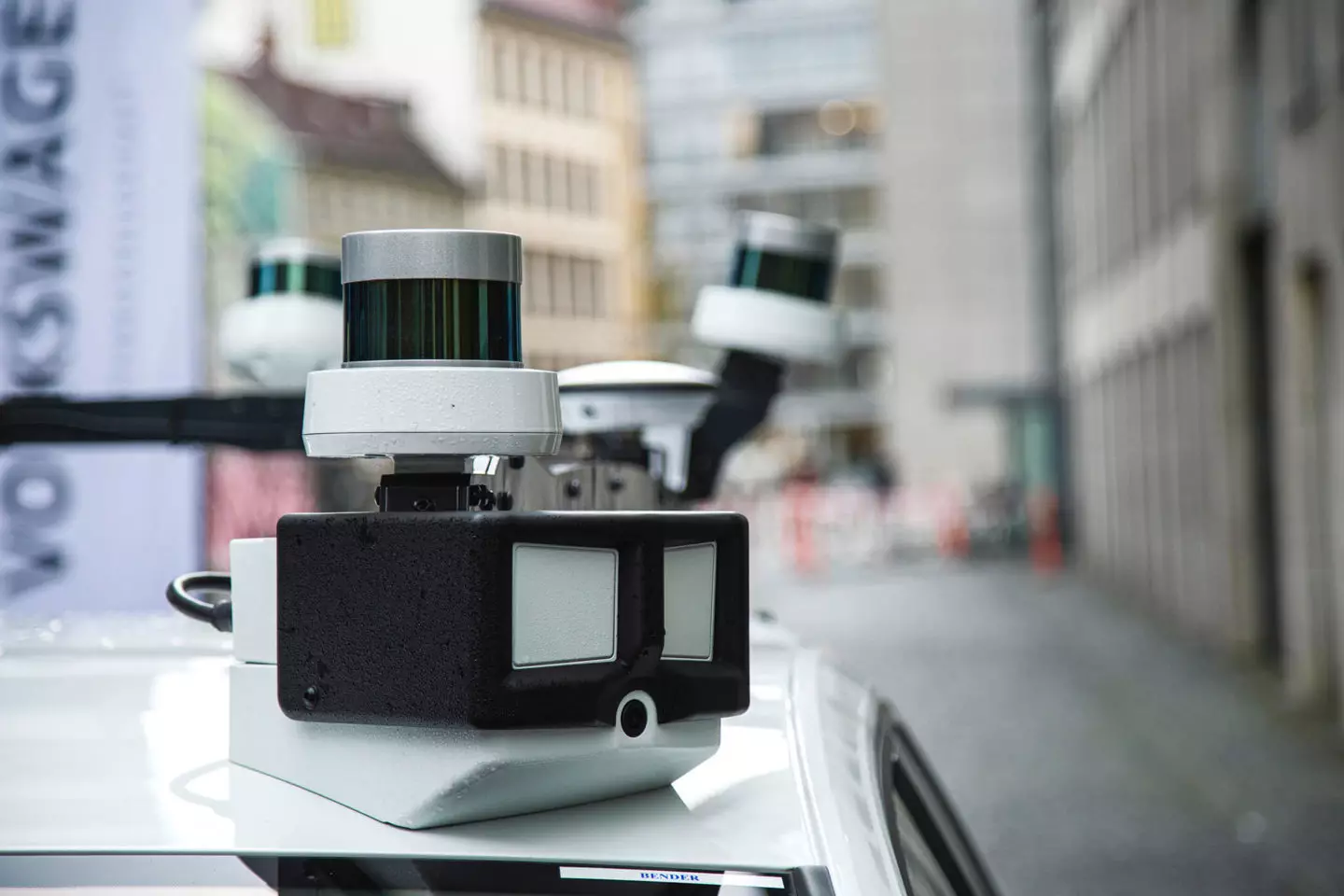
Here, just as at the Portimão racecourse — but even more sensitively, as the traffic situation can change several times a second — what matters is the fast and simultaneous processing of extremely heavy datasets like Hitzinger (which combines the know-how in motorsport, counting with a victory in the 24 hours at Le Mans, with time spent in Silicon Valley as technical director on Apple's electric car project) is well aware:
“We will use this data to validate and verify the system in general. And we will drastically increase the number of scenarios so that we can prepare vehicles for every possible situation.”
The project will gain momentum in this growing city, with notable economic expansion, but with an aging population that is also characterized by an increase in traffic flows (both daily commuters and tourists) with all the environmental impact and the mobility that this entails.
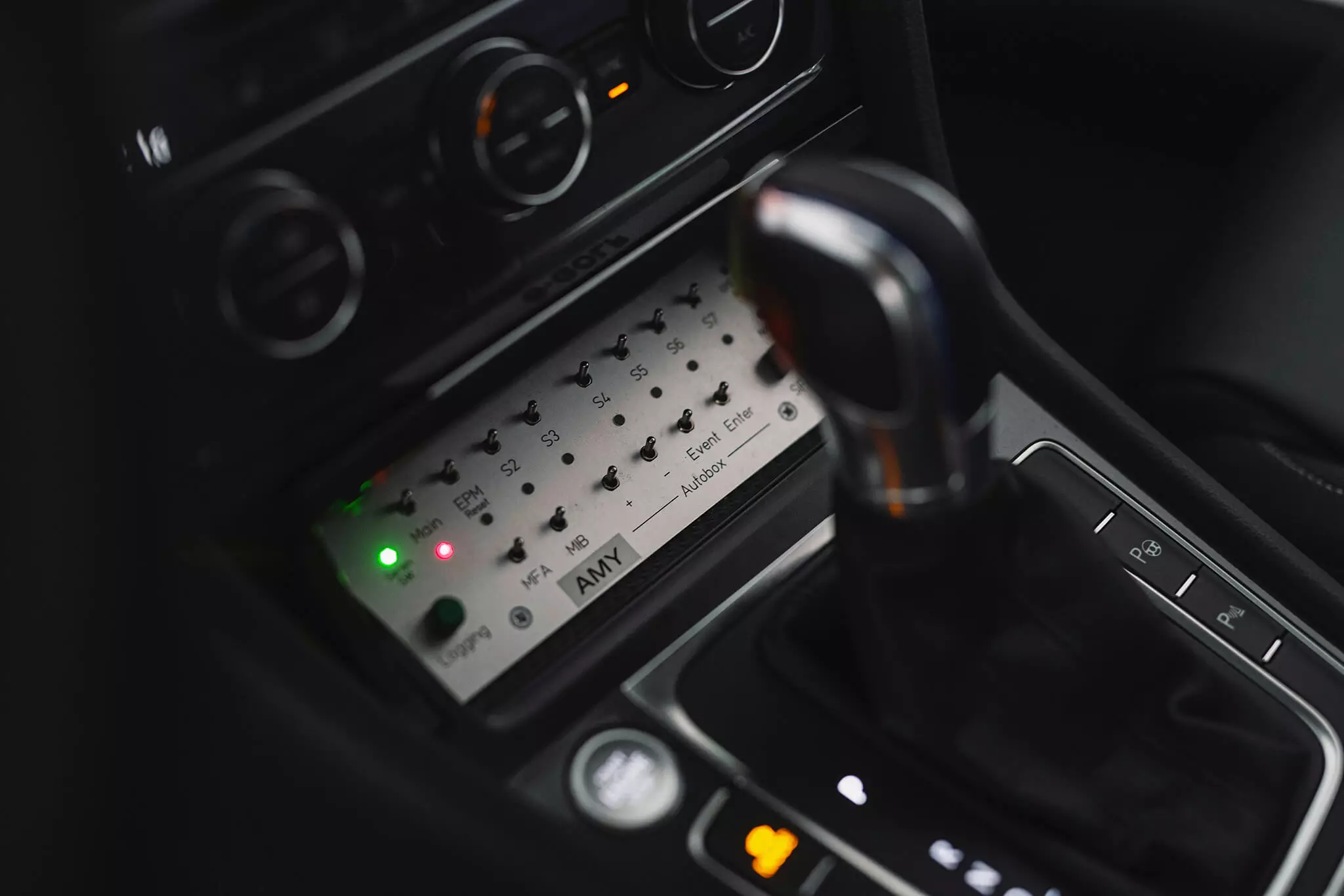
This urban circuit will see its perimeter extended to 9 km by the end of 2020 — in time for the World Congress to be held in this city in 2021 — and will have a total of 37 traffic lights with vehicle communication technology (about twice as many as which are in operation today).
As he learned in the 24 Hours of Le Mans he won as Porsche's technical director in 2015, Alexander Hitzinger says “this is a marathon, not a sprint race, and we want to make sure we get to the finish line as we want.” .

Authors: Joaquim Oliveira/Press Inform.
Razão Automóvel's team will continue online, 24 hours a day, during the COVID-19 outbreak. Follow the recommendations of the General Directorate of Health, avoid unnecessary travel. Together we will be able to overcome this difficult phase.
